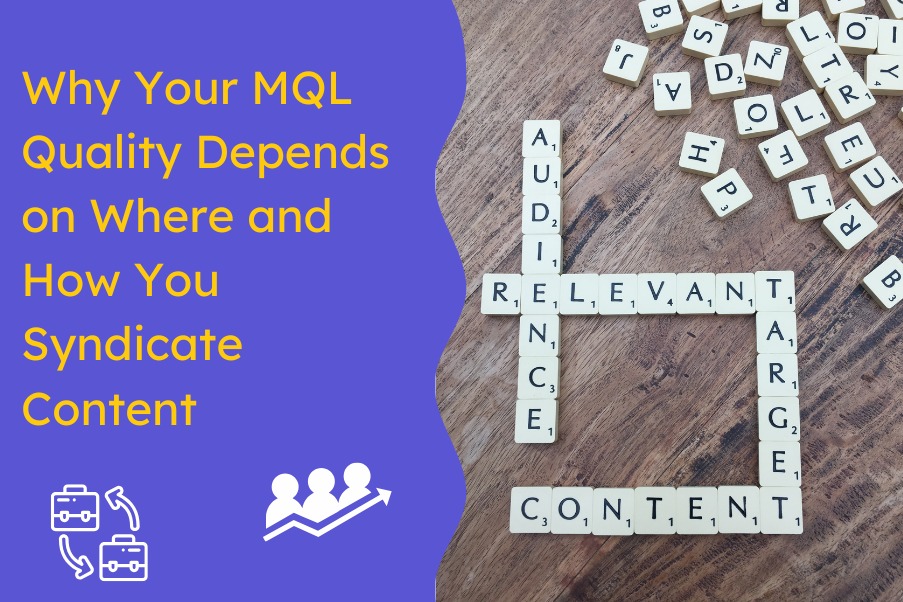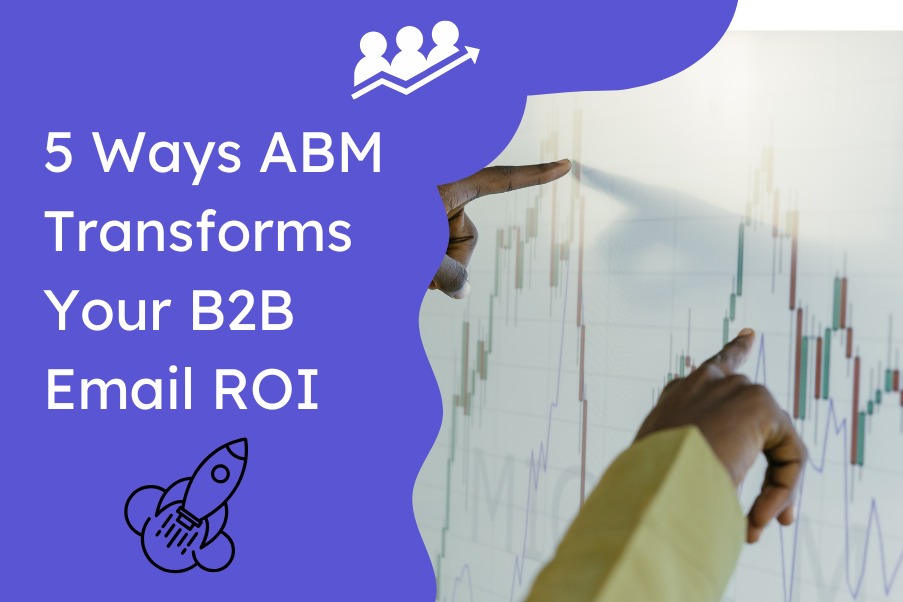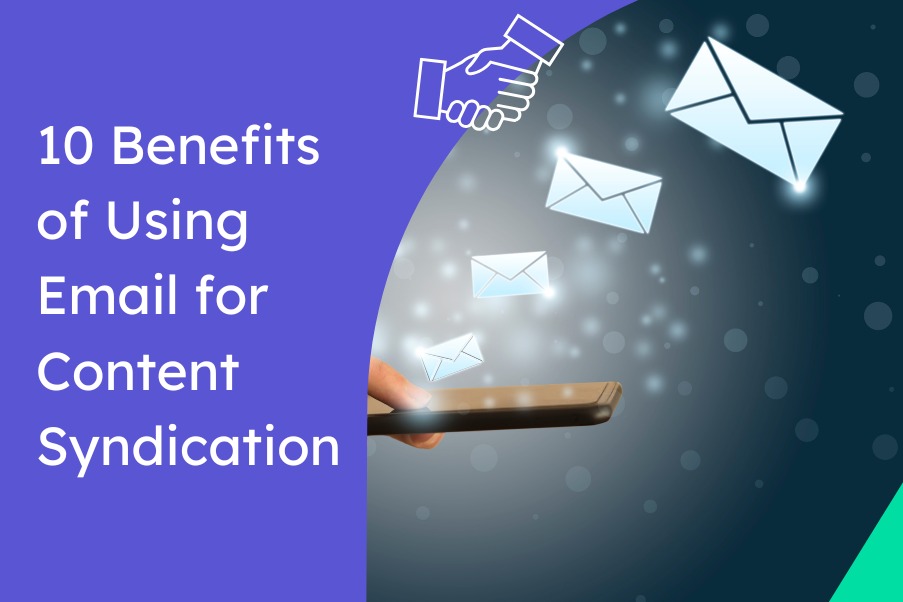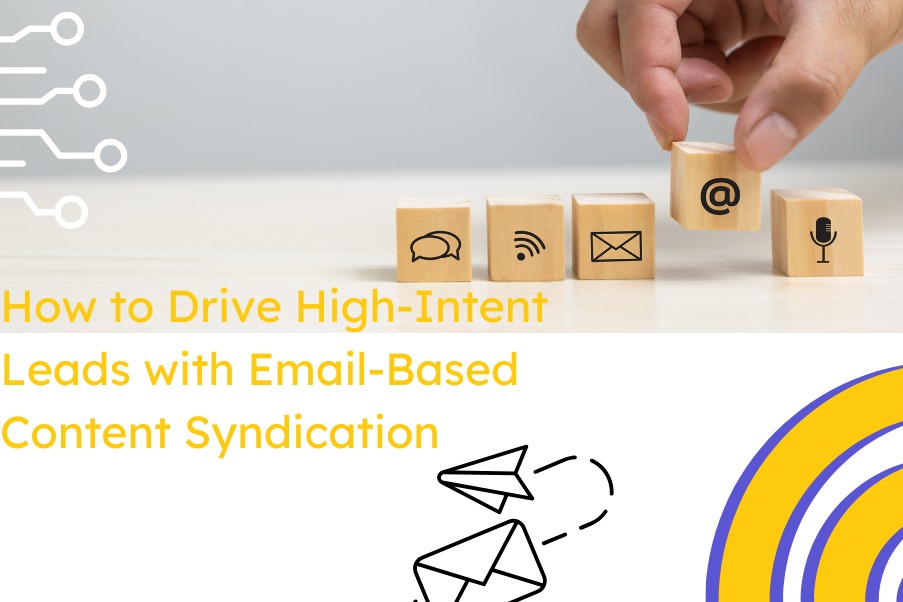Why Your MQL Quality Depends on Where and How You Syndicate Content
You’ve done the hard work.
Your product solves a real problem. Your content is strong. But your pipeline? It’s filled with leads that don’t convert, don’t respond, and don’t seem to care.
And that’s the frustrating part, isn’t it?
You’re not just chasing numbers. You’re chasing results: revenue-qualified, sales-ready leads that actually have impact. And if you’re still relying on outdated lead generation tactics, you are feeding your funnel with the wrong kind of fuel.
As such, the battle between B2B content syndication services vs ABM content syndication services heats up.
So, which approach deserves your marketing budget? Let’s get into it, with your business goals in mind. It’s time to get smarter with how you syndicate content.
What Traditional B2B Content Syndication Actually Does
Casting a Wide Net
B2B content syndication has been the backbone of top-of-funnel lead gen for over a decade. The idea? Distribute your whitepapers, blogs, or infographics across third-party platforms and generate Marketing Qualified Leads (MQLs) based on standard filters like job title, industry, or region.
If you’ve ever downloaded a gated report and got a sales call five minutes later, you’ve experienced it firsthand.
Why It Still Works for Awareness
- You reach thousands of potential buyers at once.
- It’s great for testing new messaging or content themes.
- It increases your brand visibility in crowded verticals.
But Here’s the Problem
You don’t need 1,000 leads – you need 30 that actually convert.
With traditional content syndication lead generation, you’re often left sifting through unqualified, low-intent contacts who downloaded your asset out of curiosity, not buying interest. Consequently, your sales team ends up spinning its wheels.
So, if you want to generate quality MQLs, you have to be selective about how and where you syndicate content.
How ABM Content Syndication Changes the Game
Precision over Volume
ABM content syndication doesn’t care about reach, it cares about relevance. Instead of sending your content into the wild, you send it directly to a curated list of accounts that fit your Ideal Customer Profile (ICP).
Think about it: why market to “CFOs in finance” when you can market to CFOs at 50 specific finance companies already showing buying signals?
This is what modern account-based marketing (ABM) does, and content syndication becomes a personalized extension of that.
Why B2B Marketers Are Switching
- Higher conversion rates and shorter sales cycles.
- Alignment between marketing and sales teams.
- Real-time intent data to track buying behavior.
Unlike traditional content syndication marketing, ABM syndication delivers account-qualified leads, not just form fills. This is the advantage of knowing where to syndicate content for the most impact.
B2B Content Syndication Services vs ABM Content Syndication Services – The Real Differences
| Criteria | Traditional B2B Syndication | ABM Content Syndication |
| Targeting | Broad: industry, job title, location | Narrow: specific accounts, buying signals |
| Volume | High | Focused and intent-based |
| Lead Quality | Mixed | High-value, mid-to-bottom funnel |
| Personalization | Minimal | High (persona and account specific) |
| Sales-Marketing Alignment | Often disconnected | Fully aligned from the start |
| Funnel Fit | Top-of-funnel | Mid-to-bottom funnel |
| ROI Tracking | Difficult to attribute | Easier to map back to the pipeline |
That’s the key when comparing content syndication b2b services vs ABM content syndication services: You’re choosing between noise and real opportunity.
Start with a Real Content Syndication Strategy
You don’t need to syndicate everything, just the content that aligns with where your buyers are in their journey. A strong content syndication strategy helps you map out what goes where, so you’re not wasting good content in the wrong places.
Consequently, this kind of clarity takes the guesswork out of planning. Instead of wondering if a piece will hit, your content syndication strategy guides the who, what, and when. As a result, you go from scattershot to strategic.
Think of Content Syndication Marketing as Positioning
People aren’t just looking for brands, they’re looking for voices they can trust. That’s where content syndication marketing steps in. And it consistently shows up in the places where your audience already learns, scrolls, and solves problems.
With a smart approach to content syndication marketing, your brand becomes a source. A guide. Someone worth keeping tabs on; no cold pitch needed.
When Paid Content Syndication Makes Sense
You’re on a deadline. You’ve got a lead goal. Organic reach won’t cut it. This is where paid content syndication earns its spot.
It helps you skip the “hope it lands” phase and target based on industry, job title, and behavior. When used right, paid content syndication isn’t expensive; it’s precise. And when every dollar counts, that precision matters a lot.
Learn from Real Examples of Content Syndication
Not every syndication effort is worth sharing, but the good ones? They drive action. Let’s say you repurpose a whitepaper into a co-branded article on a niche industry blog. That’s lead-gen gold.
Think of webinars shared through partner newsletters. Or your LinkedIn article is reshared by a thought leader. These examples of content syndication prove that visibility multiplies when you meet the audience where they already are.
How Free Content Syndication Still Works
You don’t need a big budget to get in front of the right people. With free content syndication, you can repost articles on Medium, push newsletter content to Substack, or republish to LinkedIn and still build traction.
Is it slower than paid? Yes. But it’s a long-game move that earns trust over time. For startups or marketers testing the waters, free content syndication offers reach without risk. You grow smarter and save money.
Break Down the Types of Content Syndication
All syndication is not created equal. There are types of content syndication you’ve probably used without knowing: full content republishing, summary + link, co-branded PDFs, and curated email features.
Knowing the different types of content syndication lets you match format to purpose. Want traffic? Go for teaser + link. Want credibility? Try full-article syndication with a respected outlet. The more you mix and match, the better your chances of reaching the right eyes.
The Buyer Journey Has Shifted and So Should Your Strategy
Buyers today want relevant, timely, and valuable content. And they don’t want to be sold, they want to be educated.
Intent Signals Matter More Than Ever
Thanks to behavioral and firmographic data, you can now track which accounts are actively searching for a solution like yours. That’s gold. ABM content syndication taps into this by serving content to the right account at the exact right time.
Your Sales Team Deserves Better Leads
Traditional B2B content syndication often delivers names that have no idea who you are. That’s not helpful to your SDRs.
But ABM content syndication campaigns deliver leads who’ve seen your brand on their terms, with content tailored to their industry, challenge, or stage in the buying journey.
Personalization Isn’t Optional Anymore
According to Inbox Insight, personalized messaging increases engagement by over 300%. With ABM, every content touchpoint, from emails to landing pages, is crafted for that account’s specific context.
It’s not just a nice-to-have. It’s the standard when you decide how to syndicate content effectively.
Still Using Traditional Syndication? Here’s Where It Fits
This isn’t a hit piece against traditional syndication. It still serves a purpose when:
- You’re launching a new product and need reach.
- You’re filling top-of-funnel awareness gaps.
- You’re running a multi-touch nurture campaign.
The smart move? Use it as a first touch. Then let ABM content syndication guide the rest of the journey.
Real-World Perspective – Which One Performs Better?
Let’s talk ROI.
A global SaaS firm tested both methods. With traditional syndication, they received 900 MQLs. Only 8% converted into the pipeline.
When they shifted to an ABM content syndication platform, they narrowed their target list to 75 key accounts, ran three personalized content campaigns, and generated 45 pipeline opportunities, a 4x increase.
That’s not theory. That’s pipeline reality.
What to Look for in a Content Syndication Platform
There’s no shortage of vendors. But if you’re planning to scale, these are non-negotiables:
- Access to intent data and technographic filters.
- Account-level personalization capabilities.
- Integration with your CRM and MAP.
- Transparent lead verification processes.
- Experience running ABM content syndication lead programs.
Vendors like DemandScience and Madison Logic lead the charge here, helping businesses pair content with the right decision-makers at exactly the right moment.
How to Structure a Winning ABM Content Syndication Campaign
You don’t need a six-month roadmap to get started. Just a smart plan.
1. Identify High-Intent Accounts
Use your CRM data and third-party signals to narrow down your target list. Prioritize accounts already showing interest in related solutions.
2. Match Content to Persona + Stage
Use content syndication examples like solution guides for executives, comparison sheets for managers, and case studies for end-users.
3. Syndicate Intelligently
Push content across multiple channels, publisher networks, email, and social retargeting, but stay locked into the same account list.
Track opens, clicks, downloads, and revisit behavior by account. Then pass only sales-validated leads to your BDRs.
It’s Time to Choose Smarter
So here’s the honest truth.
If you’re still asking which is better, B2B content syndication services vs ABM content syndication services, you’re asking the wrong question.
The real question is: Which one fits where in your buyer’s journey?
Use traditional content syndication b2b to syndicate content broadly and fuel top-of-funnel awareness. Then lean into ABM content syndication services to guide high-intent accounts deeper into your funnel with relevance and timing.
If you’re aiming for volume, go broad.
But if you’re aiming for a pipeline, go to ABM.
Need help running both under one roof? PMG helps B2B teams like yours build smarter lead funnels that don’t waste budget or time.





